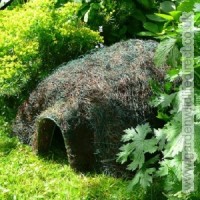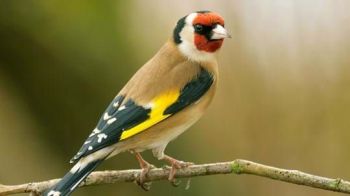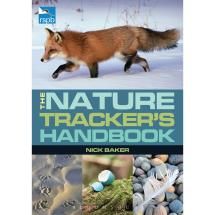Woodland Animals
| Wildlife need woods - and we need our woodlands. Like the Amazon Rainforest, British woodland has a vital role to play in keeping all of us in good health and wellbeing, both animals and people. Woodland supports many species, thanks to the variety of different habitats, nooks and crannies found in woods. Mammals, birds, reptiles and amphibians, fish, butterflies, moths, beetles, crickets, grasshoppers, centipedes, millipedes, crustaceans, bees, wasps and ants, spiders and harvestmen, slugs and snails all live in the woods. | Why plant trees? They are essential to wildlife |
| Like the Amazon Rainforest, British woodland has different layers, from the forest floor, up to the shrub layer, then up to the smaller trees, the taller trees and finally the canopy area. The fact that there are these layers enables all the animals to live well together. Ancient trees are particularly important especially for animals such as bats. Wildlife love holes, dead and rotting wood & trees, nooks and crannies, all perfect spots for plants and fungi - and many thousands of species of animals. Find out how the Woodland Trust is helping ancient woodland today If there are a number of ancient trees in one area, this is even better for wildlife - they can enjoy the wood decay and the surfaces of trunks, bough and roots, and all gather together in one small area. You can help ancient trees! Look out for ancient trees when you're out and about and let the Woodland Trust know about it. |
| Wildlife in Woods There are those animals who are there all the time, such as the little dormouse, who is nocturnal and very hard to find. Many other UK mammals - shrews, squirrels, mice, the wood mouse, hedgehogs, foxes, voles, weasels, stoats and badgers stay there at least some of the time. Bats tend to emerge at dusk Many mammals are shy and elusive, so you may not see them as you stroll through the woods. An animal tracker book will help you work out who has been where! Most woods have a variety of bird species, perhaps staying all the year round or merely coming for the spring and the summer. The chiffchaff, nightingale, willow warbler, black cap, red start and pied flycatchers tend to be the spring migrants. You'll also spot the tit family, the tree creeper, woodcock, wood pigeon, wood warblers and woodpecker. Owls also need woodland, especially tawny owls, as do buzzards. And you may also spot chaffinches, nuthatches & others. Many birds & insects can be found on rotting wood or in the hollow of trees. One of the reasons for the huge variety of birdlife in broadleaved woods is because of the number of insects and other invertebrates which love to live there as well. They particularly enjoy the oak tree. You'll also find lots of beetles, especially around old trees, and also butterflies. The more nocturnal wasp is also there - as are bees, wasps, flies and spiders. What's what and who's who?? The Woodland Trust can help you identify different trees throughout the different seasons - why not have a go at drawing what you see or practising some nature photography? They've also got lots on bird identification, including how to work out who's nest is whose! Get identifying here |
|
| Identifying reptiles and amphibians Froglife can help you identify reptiles and amphibians - they've got an app you can download to do this and also you can record your sightings! It all helps build up your knowledge, but crucially, it helps conservation charities work out what species are doing well and which need our help. |
| Adders will often come out to sunbathe in groups in the spring time. They are protected by law, so you mustn't disturb them. Newts, frogs and toads are most likely to be found in woods with rivers and ponds, as they need those to survive. Along woodland rides - those glorious open paths of green grass - you'll find rich flora and an even greater variety of insects and animals - perhaps you'll spot ants on the march. | Join the Woodland Trust today and protect wildlife & woods from £4 a month |
 Help hedgehogs with food and a home from Garden Wildlife Direct | Other woodland life includes... You'll find fungi - we saw quite a few this morning. They don't like change, so tend to be found in ancient woodland. Fungi are important beause they supply trees with nutrients from the soil - while the tree give fungi sugar. Then there are lichens, those orange, white, breen or brown crusts on old stones, tree trunks and branches. They consist of fungi and algae combined. And there are about 50 native tree species in the UK (as well as non-native trees, usually planted by people), flowers and other plants - shurbs, mosses, ferns and wildflowers, most famously the bluebell, foxglove and snowdrop. So there's lots to discover and explore! |
| Help save British woodlands and wildlife Ancient woodland is one of our richest wildlife habitats. It really is ancient - it's defined as woodland that has been continually wooded since 1600AD It covers just 2% of the UK's land areas. Thousands on thousand of acres of ancient woodland were replanted with conifers between the 1930s and 1980s which damaged the communities of animals and plants. The Woodland Trust wants to see the active conservation and restoration of our ancient woodland. Find out about the Trust's campaigns here All 1,000 of the Woodland Trust's woods are free to visit - Click here to find your local woods Please, please don't have a disposable barbeque in woodland or any dry area. They take far longer than you think to cool off after you've finished with them. It's high time they were banned |
| Other ways to help the Woodland Trust help woodlands
|
| Charities helping British wildlife include: The Wildlife Trusts - there are 46 of these around the UK and you can find your local Wildlife Trust here - help them restore 30% of land and sea for nature by 2030! The British Wildlife Centre in Surrey - they have photography days, and you can visit. They also teach children to appreciate and respect Britain’s own wonderful native wild species The Mammal Society works to give the mamals of the British isles a brighter future The RSPB (thats the Royal Society for the Protection of Birds) The Wildfowl and Wetlands Trust (WWT) protects, restores and creates healthy wetlands, and help bring people closer to nature. Amphibian and Reptile Conservation Trust - find out how you can volunteer to help amphibians and reptiles However, there are LOTS more - you can get a list here. PLEASE see what you can do to help them. Every single action helps. |


